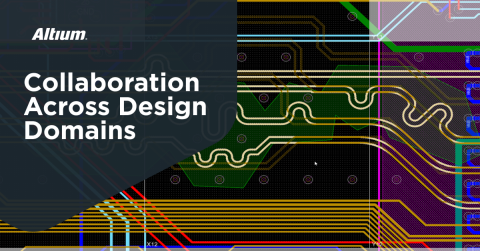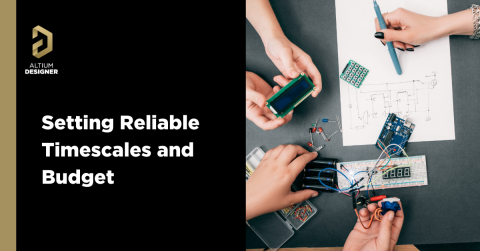How to Solve Your Engineering Design Review Procedure Challenges

If you’re like me, you’ve gone through plenty of engineering design reviews, both on the front end of a project and the back end before manufacturing. Engineering design reviews are performed to accomplish multiple objectives, and with many engineering teams taking a systems-based approach to design and production, electronics design teams will need to review much more than just a PCB layout and BOM.
Today’s challenges with sourcing, manufacturability, reliability and mechanical constraints are all areas that must be confronted in real designs. Multiple stakeholders have to work together to get through these reviews in the most efficient way possible. A team’s most precious asset is time, so an engineering design review process should focus on efficiency while still being comprehensive and thorough. But how to conduct a design review?
Types of Engineering Design Reviews
An effective design review isn’t performed by a single team member or only by a customer. It’s a collaborative process that involves designers, the end customer, management, and even the manufacturer. Think of it as a peer review process for engineered systems; multiple parties need to provide input on various aspects of the design and document those required changes in a shared location. Most importantly, everyone involved should have visibility into the same set of data in a convenient interface. Today’s collaboration tools for remote teams are great for implementing a comprehensive design review process, where everyone involved in a team can see design data and provide input.
What needs to be examined during an engineering design review process? For an electronics design team, there are multiple aspects of any project that should be examined in a design review:
- Mechanical backchecking: Very simply, will the PCBA and all of its peripherals fit inside its enclosure? Design teams can leverage collaboration with MCAD software to ensure an assembled product will fit into its enclosure without interference.
- Electrical review: Design rules in your PCB software are great for ensuring you don’t create errors in your schematics or layout, but they only get you so far. A thorough review of PCB design data is needed because design rules can’t always catch functionally incorrect design choices.
- DFM review: Some designers will probably just rely on their fabricator to perform this review, but it should also be examined by a design team ahead of production. If you did your homework early in the design process, then you’ve already prepared a DFM review checklist for your product that can be examined in a design review.
- Test and reliability review: For high-reliability electronics, or devices that will be deployed in non-standard environments, part of a design review might need to focus on developing testing requirements around a design, ensuring reliability standards are met, or checking a design against other speciality industry standards.
- Application development review: Modern embedded systems will have their own application team that is responsible for firmware and software development. This team would normally perform their own code reviews, but they should also ensure they’ve reviewed the corresponding hardware and schematics.

Whether you’re a service bureau or you work at an OEM, you’ll likely perform multiple design reviews at each phase of a project to evaluate progress. Design reviews aren’t necessarily difficult, they just come with the territory when designing hardware. However, they can be a time-suck, and they can end with a big list of action items that don’t always move your project towards the finish line. Instead of the long email chains
Ideal Engineering Design Review
So what keeps everyone from doing all of these reviews effectively? Today’s electronics engineering teams are multifunctional and multidisciplinary, yet you might not get that impression if you watch their engineering design reviews. Here are what I see as some of the important characteristics of an ideal design review.
Objectives Are Defined
Conduct your engineering design reviews with purpose, don’t just review the design because you want to look at it. An engineering design review process should have a clear objective, which means a specific portion of the design (schematics, layout, mechanicals, etc.) are the subject of the review. It’s not uncommon for scope creep to occur mid-review, but setting objectives can help you stay within the limits of your agenda and helps the team focus on the important points during a review.
Someone Keeps Concise Notes
I can’t tell you how often I’ve had to run through a design live on Zoom or Teams, all the while talking out the required changes to myself and trying to keep track of everything. Something simple like keeping someone in charge of note-taking helps you narrow down action items, and identify design changes, and the justification for those changes. Sometimes, the justification is where the real insight sits, not just in the change itself. Keeping track of all this information will set you up with a list of clear, concise action items after the review is completed.
Great Reviews Are De-Siloed
Instead of reviewing the project with different functional groups or specific team members, make sure all critical personnel from each relevant area of a design (MCAD, firmware, etc.) can be present during a design review. Don’t rely on people to play a game of telephone, it creates too much risk of miscommunication. Instead, make sure everyone has viewing access to the same project data and can participate in the design review.
Follow Up With Action Items
It’s easy for important tasks to get drowned out in unimportant information. Things will go in one ear and out the other as soon as people jump off a Zoom call and go back to work. In addition to keeping shared notes of important design tasks or changes, everyone should agree on the outstanding action items at the end of the review. These should be sent out through the relevant digital channel, ideally through email as well as annotations directly to the design data where possible.
Annotate Design Data in Real Time
In addition to a final follow-up with team members, it’s great if you can annotate shared design data during a review. Applying comments directly to a design is a great way to ensure that required changes are pinpointed and clearly described during the design review. At a minimum, you should use screenshots of the problem areas and annotate these, but the best case is placing comments directly in the PCB layout or schematic to call out the required design modifications.

When you need to get through an engineering design review process for your Altium projects, don’t rely on email chains or file exchanges. Your team can share and collaborate in real-time in Altium. Design teams can perform full engineering design reviews inside Altium, popular MCAD applications, and a host of partner applications.












